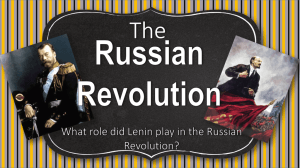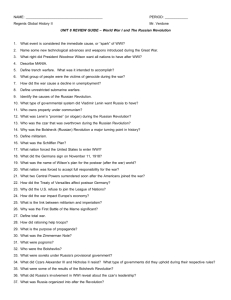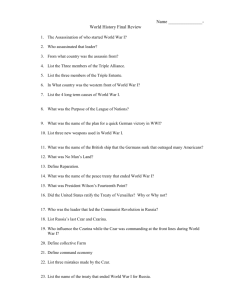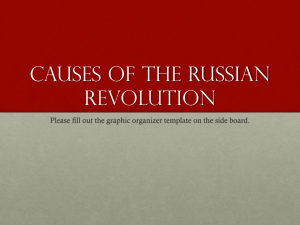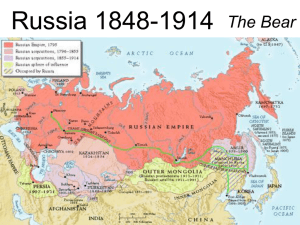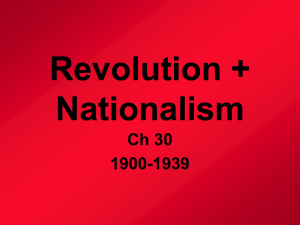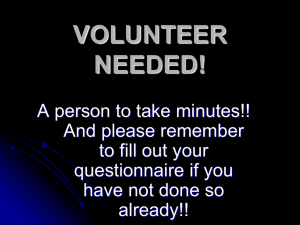PPT Lecture: Russian Revolution 1917-1924
advertisement
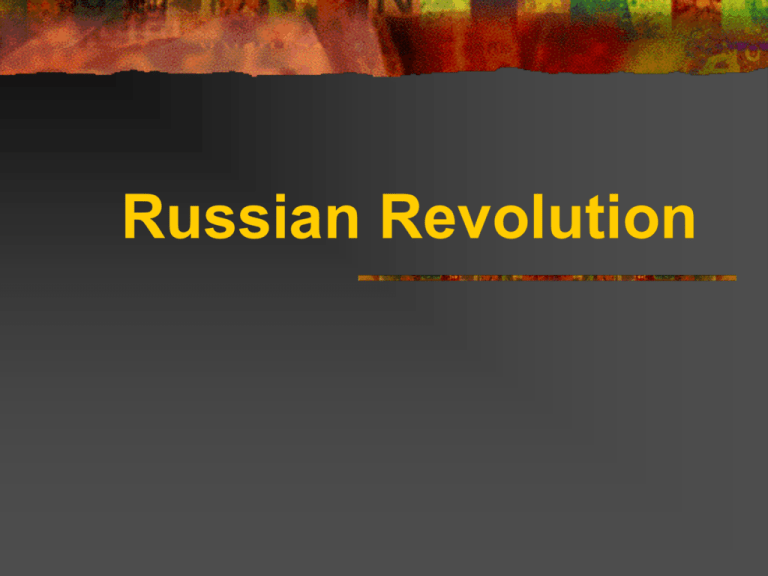
Russian Revolution Opening Focus Assignments 1/9 “Faults of WWI Peace Treaty” 1/10 “WWI and changing values” 1/11 “Views of the War” 1/14 “Lost Generation” 1/15 “Dawes Plan” 1/18 “Path to Revolution” Russian Government Before Revolution Monarchy: The Czar (Tsar) Until 1905 the Tsar's powers were unlimited. Russia had no constitution, no political party system to check the Tsar's power A strong secret police which terrorized the people. Royal Background Nicholas II • Created the first secret police in Russia, brutal leader, response to revolt of army officers in 1825 Czar Alexander II • He implemented important reforms, notably the abolition of serfdom, • In 1867, he sold Alaska and the Aleutian Islands to the United States. • Killed by the Revolutionary Group: The People’s Will Czar Alexander III • Alexander III's reign was during an industrial revolution in Russia . • His reign was harsh, against revolutionaries and other liberal movements. Czar Nicholas II (1894) Last Czar of Russia Nicholas II was a harsh and weak ruler The Russian economy was bankrupt because of the Russo-Japanese War and WWI Russia’s entry into WWI became very unpopular. Czar Nicholas II and Family Russo-Japanese War (1904) Dispute over Manchuria with Japan Shook national confidence in their progress and rule of Czar. Bloody Sunday (1905) Russia and World War I Russia declares war on AustriaHungary War becomes unpopular Rationing leads to starvation Nicholas II leaves St. Petersburg to war front Rasputin Rasputin with Admirers March Revolution (1917) 1917- protests spread through St. Petersburg and the Royal palace is taken over. Czar abdicates Provisional government (Duma) takes control lead by Alexander Keresnky Provisional government unpopular after decision to stay in WWI October (Bolshevik) Revolution1917 Lead by VI Lenin “Peace, Land, and Bread” Won support of people (especially peasants) 1918 1918 March The Bolsheviks accept the peace of Brest-Litovsk, ending WWI with Germany. 1919-1920 1919 White Armies (Royal and Menshevik troops) attack the Reds (Bolsheviks) from all directions. 1920- Reds defeat Whites Rule of Lenin 1920-1924 Economic Reforms included the New Economic Plan (NEP) -moderate mix of capitalism and socialism Political Reforms -Bolshevik party became Communist Party -Russia becomes the United Soviet Socialist Republics Communism A Form of Socialism Central Planning of the Economy by the State Gov’t (Communist Party) makes decisions on individual jobs and pay 1924 Lenin Dies Power Vaccuum Leon Trotsky vs. Joseph Stalin Stalin takes control Now must decide how he will maintain power Decides to create a totalitarian state Characteristics of a Totalitarian State Dictatorship- Absolute Authority Dynamic Leader- Vision for the nation State Control Over All Sectors of Society State Control Over the Individual Business, Family Life, Labor, youth groups, housing, religion, education, the arts Obedience Denies basic liberties Organized Violence Uses force to crush opposition Stalin’s Totalitarian State State Control of the Economy Police Terror Control of the individual Propaganda (socialist realism) Great Purge, crush opposition Religious Persecution 5 year plan, collective farms Molding peoples minds Education Controlled by the government



